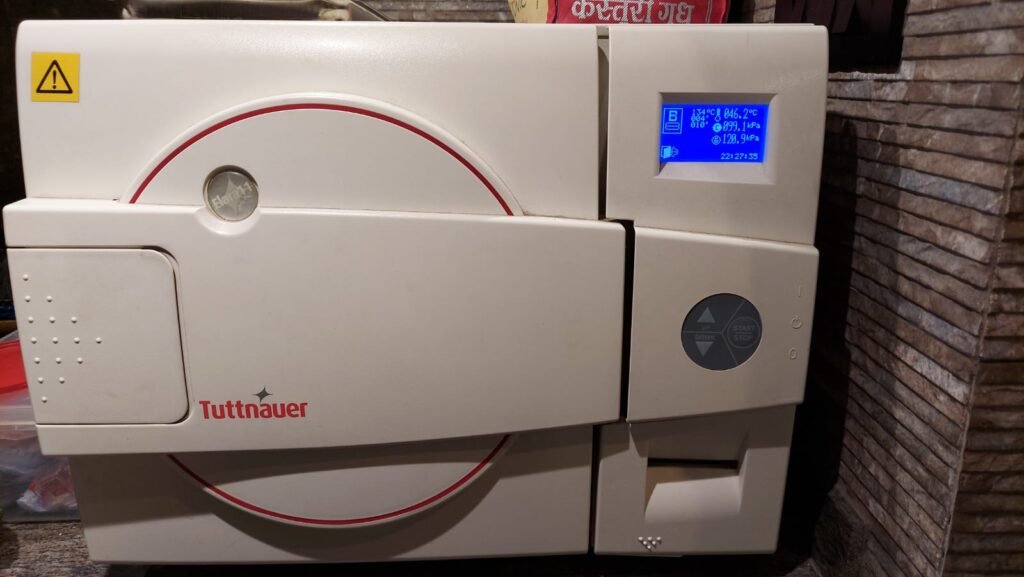Sterilization
Disinfection is the process by which pathogens are eradicated or killed. However, sterilization is the chemical and physical process that aims to eliminate absolutely all microorganisms present in any object.
That is why disinfection and sterilization are two fundamental pillars in our daily practice of dentistry. All dental materials are disinfected and subsequently sterilized in order to prevent the transmission of infectious diseases in dental procedures.
Our staff knows these concepts and maintains a protocol of action, in addition to the protection itself, making use of the appropriate barriers such as gloves, gown, mask, and protective glasses. We use disinfectant solutions for cleaning surfaces, furniture, and dental equipment that have been found in contact with the patient.
Materials such as saliva vacuum cleaners, bibs for the patient, insulating cotton, gauze, needles, glasses, and napkins belong to the range of disposable products of a new use for each patient.
Sterilization in Dentistry: why is it so important?
Sterilization in Dentistry is the most important process of the protocols that are carried out in all our clinics at Dadar, Kemps Corner, and Chembur. Therefore, it is important to pay attention to this procedure, since its bad practice can lead to the spread of germs. In each surgical intervention, the patient should keep a record of the sterilization process of the concrete material used in their operation.
Sterilization in Dentistry key elements:
Initial bath with disinfectant ultrasound is a step taken before any staff member touches anything in the office in order to avoid the risk of contamination. Autoclave is the essential step of sterilization, which requires 134°C at a pressure of 2.10 atmospheres for 45 minutes.
It is also important to have two autoclaves running daily in case of any damage. Biological control of sterilization is done by incubating bacterial spores to verify that the sterilization processes are effective.
Chemical control of sterilization is done to ensure that the pressure and temperature conditions are the ones programmed and effective for sterilization. Finally, bagging of the material allows us to store and maintain the sterilization conditions for three months.

